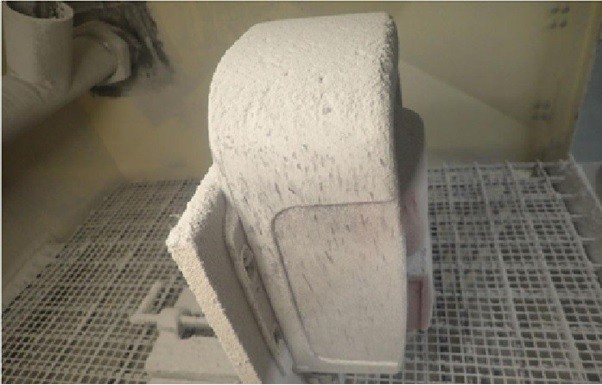At Optima we have successfully developed products which require adequate environmental protection to prevent malfunction of delicate electronic and mechanical components. In demanding environments, the reliable operation of electronic devices is a safety critical concern, not least in home security, fire and warning systems and in communications applications.
IP testing (Ingress Protection testing) is essential to determine the level of protection provided against dust, water and foreign bodies. The ‘IP Code’, or Ingress Protection Rating, is an internationally recognized standard (IEC 60529) BS:EN 60529 and ISO:20653, that classifies and rates the degree of protection provided by an enclosure.
IP Codes consists of two digits, with each digit representing a discreet aspect of protection. Protection against dust and water ingress is highly desirable in products which are exposed to challenging environments. Even in smaller domestic products and electronic devices dust and moisture ingress may affect performance in the long term with residue build-up effecting motors, sensors, screens, key action, and batteries. This can cause product failure and effect safety.
Below is shown the two-digit coding process to assess Ingress Protection.
First Digit (Dust Protection):
0: No protection
1: Protection against solid objects larger than 50mm (e.g., hands or large tools)
2: Protection against solid objects larger than 12.5mm (e.g., fingers)
3: Protection against solid objects larger than 2.5mm (e.g., tools and thick wires)
4: Protection against solid objects larger than 1mm (e.g., small tools and wires)
5: Dust-protected (limited ingress, no harmful deposit)
6: Dust-tight (no ingress of dust)
Second Digit (Water Protection):
0: No protection
1: Protection against vertically falling water drops (condensation)
2: Protection against water drops at an angle of up to 15 degrees from vertical
3: Protection against spraying water at an angle of up to 60 degrees from vertical
4: Protection against splashing water from any direction
5: Protection against water jets (limited ingress permitted)
6: Protection against powerful water jets (limited ingress permitted)
7: Protection against temporary immersion in water (up to 1 meter for 30 minutes)
8: Protection against continuous immersion in water under specified conditions
9k: Protected against close-range high pressure, high temperature spray downs.
Above – An example of a security critical product in IP dust chamber testing, after prolonged exposure to particulate dust. (8h)
For dust protection, a higher digit indicates better protection. For example, a device with a rating of IP5X is protected against dust but may allow limited ingress.
For water protection, a higher digit also indicates better protection. For instance, a device with a rating of IPX7 can be submerged in water up to 1 meter deep for up to 30 minutes.
Considerations for Product Design:
A product’s intended environment and usage scenario dictates the appropriate IP (Ingress Protection) rating, requiring a careful balance between functionality, cost, and complexity. While seals and gaskets are essential for achieving the desired level of protection, they can complicate manufacturing and assembly processes. Over-specifying an IP rating can lead to unnecessary costs without significant functional benefits and can pose challenges for serviceability features such as calibration doors, hinges, access panels, and battery compartments.
Selecting the right level of IP protection involves considering the durability and service life of seals and gaskets to ensure reliable performance over the product’s lifespan. Products must be designed to withstand environmental factors such as temperature fluctuations, mechanical stresses, UV exposure, as well as provide dust and water resistance. Additionally, functional elements such as heat dissipation, sound projection, touchscreen or button functionality, aesthetics, and other critical aspects must be integrated alongside IP protection to ensure a well-rounded and practical design.
Above – Example of automotive product with high intergrity sealing gasket clamped by complex compression clip arrangement.
Testing Process:
IP testing involves subjecting the product to specific conditions, such as dust chambers, water sprays, and immersion tanks, to evaluate its performance against various environmental factors. Test results are then used to assign the appropriate IP rating. Testing is provided by speciality test houses who are certified to provide appropriate service ratings.
Above – Example of water ingress into an enclosure during gasket testing of a safety critical product. Green area is a water actvated dye powder, to allow for more comprehensive anaylais of failure points.
A detailed breakdown of IP rating criteria.
Dust Protection (First Digit):
No Protection (0):
Devices with a rating of 0 provide no specific protection against dust. They are generally not suitable (or susceptible to) environments with dust or particulate matter.
Protection Against Solid Objects (1-6):
Ratings from 1 to 6 indicate increasing levels of protection against solid objects of varying sizes. This involves testing the product’s enclosure to ensure that no harmful deposits or particles can penetrate and affect the device’s performance.
Dust-Protected (5):
Products with a rating of 5 are tested to resist the ingress of dust, and while some dust may enter, it must not be enough to interfere with the normal operation of the device.
Dust-Tight (6):
Devices with a rating of 6 are considered dust-tight, meaning they provide complete protection against dust ingress. This is crucial for applications in environments with high levels of dust, such as construction sites or industrial settings.
Water Protection (Second Digit):
No Protection (0):
Products with a rating of 0 offer no specific protection against water. They are not suitable (or susceptible to) exposure to water.
Protection Against Water Drops (1-3):
Ratings from 1 to 3 indicate protection against vertically falling water drops, water drops at an angle, and spraying water. These levels are relevant for devices used in environments with light moisture or occasional splashing.
Protection Against Water Jets (4-6):
Ratings from 4 to 6 involve testing against water jets of increasing power. This is crucial for devices exposed to water jets, such as outdoor equipment or machinery subject to regular cleaning.
Protection Against Immersion (7-8):
Ratings of 7 and 8 indicate protection against temporary immersion and continuous immersion, respectively. Devices with these ratings can withstand submersion in water for specified durations and depths. This is essential for products like underwater cameras or devices used in marine environments.
Verification and Certification:
Test results are analyzed, and if the product meets the specified criteria, it is assigned the appropriate IP rating. Certification bodies and external test-houses are often involved to validate and certify the product’s compliance with international standards and against established pass-fail protocols.
What is advanced IP69K?
The IP69K rating offers protection against the intrusion of dust and high-temperature, high-pressure water, making products bearing this certification well-suited for use in environments requiring meticulous sanitation of equipment.
What are the benefits of IP69K?
In settings necessitating thorough washdown, like the food processing industry, the combination of water, chemicals, high pressures, and temperatures can pose a threat to electronic circuits and instrumentation. The IP69K rating provides assurance that equipment subjected to these tests is not only durable and resistant but also conforms to the highest protection standard on the scale.
How is the IP69K rating achieved?
Products carrying the IP69K rating undergo a rigorous series of tests to ensure they offer effective protection against the penetration of high-pressure, high-temperature water, and dust.
The water intrusion tests involve placing the product on a turntable rotating at 5 ±1 revolutions per minute. The product is then sprayed at close range with water at a rate of approximately 4 gallons/16 liters per minute, maintaining a water pressure between 1160-1450 psi at a temperature of 176°F/80°C.
The nozzle spraying the water is held between 4 and 6 inches from the product, at various angles. After this demanding testing procedure, a product is deemed to have successfully achieved the rating if it completely resists water ingress.
In conclusion, achieving the right IP rating for dust and water protection involves a comprehensive design and testing process. Balancing functionality, usability, and environmental resistance is crucial to creating products that can withstand the demands of various operating conditions. Manufacturers often use IP ratings to communicate the level of protection their products offer to consumers and businesses, helping them make informed decisions based on the intended use and environmental considerations.
At Optima we have had significant experience of designing products for IP compliance, this includes the specification of seals and gaskets and ground up consideration of how to design and assemble a product most effectively to achieve intended an ingress rating. We also have hands on experience of IP testing, and partner with certified test houses to ensure the products we have developed are legally compliant and receive the correct document sign offs.
Optima provides a full industrial design and engineering service. We have developed a wide variety of products including industrial, consumer, medical and transport solutions. We can help advise on and develop compliant products across multiple product sectors.
Our goal is to develop long term partnerships with organisations and individuals to design great products. With over 25 years experience we understand the complexities of products and more importantly, how to get them made.



